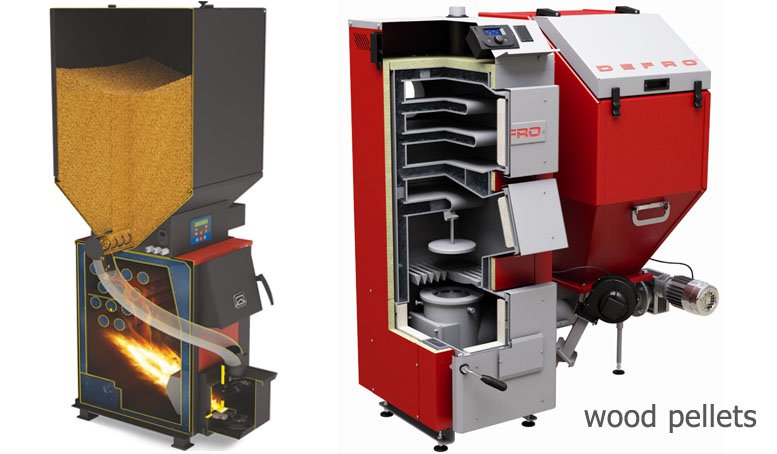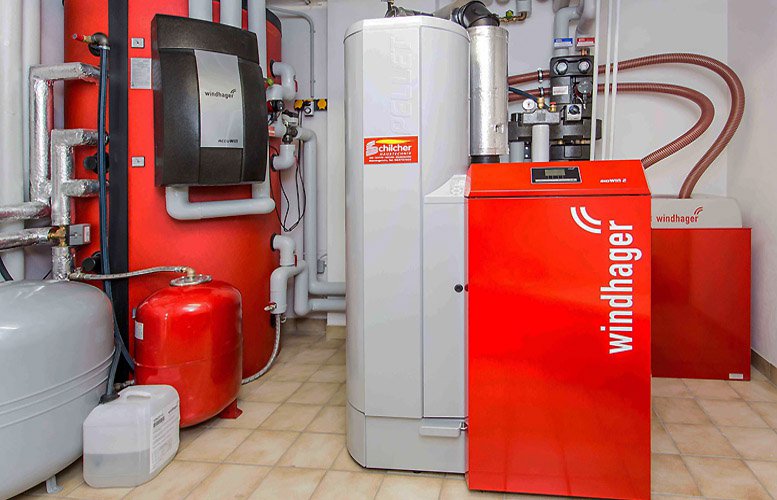An oven is one of the oldest types of heat generator. Ovens are inefficient, ineffective, require constant supervision, and they are too weak to heat up a large residence. However, solid-fuel boilers are widely spread. Using them is a necessity, because other energy sources cannot keep a room warm, or they are too expensive.
Their biggest minus is inability to maintain stable temperature. You have to control the burning process all the time, add fuel, and remove ash and slags.
Nowadays, there are pyrolysis wood combustion generators with adjustable power. In these solid fuel central heating boilers, it is not actually firewood that burns, but gas, which it emits when exposed to high temperature. There is little ash. There are models, which regulate boiler power automatically by adjusting draft, without even using an electric motor drive. However, there is still no way around the inconvenience of having to load fuel and remove ash every day.
Pellet central heating boilers. They use wood pellets consisting of compressed or granulated wood. This appears to be both a pro and a con of solid-fuel devices. However, with a stable supply of pellets, the advantages become undeniable. These include ease of use, energy efficiency, fully automated heating process (including automatic ignition and fuel supply), and eco-friendliness.

Today, boilers that use solid fuel only are a rarity. Mostly, market offers combined and universal central heating boilers, which use two or three types of fuel. A combined device is one, which can automatically switch to diesel fuel or gas once solid fuel is out.

Now there are double-combustion boilers. They feature separate combustion chambers for gas, solid and liquid fuel and a built-in 4-15 kW electric heater, which also allows you to use electricity. Various types of combined multi-combustion boilers boast heat capacity up to 3000 kW and can warm up a 30,000 m² residence. These universal devices are quite expensive.
